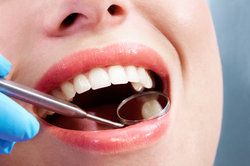Tooth Stains and Smoking: Another Great Reason to Quit
by drrapisarda
Dr. Robert Rapisarda has helped so many patients around the Barre area get the smiles of their dreams. One of the ways of enhancing the appearance of smiles that has proven especially effective is teeth whitening, which lifts stains and brightens tarnished smiles.
Many different substances can lead to stained teeth, from beverages like coffee to foods like beets. One particular cause of tooth stains that we want to look at right now is cigarettes and cigars. Smoking is an awful habit, and there are plenty of reasons why.
Smoking Is Already Bad for You for So Many Reasons
We already know how bad smoking is for your general health. The damage done to your lungs can be considerable, increasing the risk of developing lung cancer and other respiratory issues later in life. In addition, smoking increases your risk of hypertension and heart attack.
In some sense, the dental stains and tooth discoloration caused by smoking are the least of your worries.
How bad can dental stains from smoking get?
They can be very bad.
If a person has smoked for years and years, the gradual change to the color of their teeth mounts up. Sometimes the teeth can be significantly browned or yellowed, making the patient’s smile seem especially tarnished.
Other Dental Problems Linked to Smoking
As we mentioned, the tooth stains may be the least of your worries. In addition to causing tooth discoloration, smoking is also linked to bad breath, increased risk of gum disease, and increased risk of developing oral cancers.
The bad breath that a smoker experiences can be particularly bad, even with regular brushing and flossing. The smell can permeate the lips and the area around the mouth, and it can also get stuck in a smoker’s clothes.
Gum disease is the bacterial infection of gum tissue. When a person smokes, it makes them more susceptible to gum disease. If left untreated, the gum disease can lead to gum recession, loose teeth and tooth loss, and many more severe dental health issues.
With regard to oral cancer, smoking is not just linked to lung cancer, but is can also lead to cancer of the throat, the jaw, the salivary glands, and the tongue.
Treatment Options for Dental Stains
The ideal option for treating dental stains depends a lot on the extent of the discoloration.
If the stains are mild, professional teeth whitening may be the best option to consider. This will involve the use of bleaching agents to brighten the enamel of the teeth.
For more severe dental stains, teeth whitening may not be enough. In these cases, the use of porcelain veneers, dental bonding, or even a dental crown may be more ideal.
Treatment Options for Other Damage Due to Smoking
If you suffer from gum disease or some form of tooth decay or damage due to smoking, there are a number of restorative procedures to consider to improve your dental health and wellness, including gum grafting and the use of various restorations.
When you stop by for a visit, we will be more than happy to go over all of your options for advanced dental care in full detail.
Schedule a Consultation for Cosmetic Dentistry
For more information about your many different options for advanced dental care, be sure to contact our cosmetic and restorative dentistry center today. Dr. Rapisarda and his entire team will be sure to provide you with all the information you need to achieve all of your dental care goals.
Tooth Stains and Smoking: Another Great Reason to Quit Read More »









 Many dental patients can recall at least one bad experience at the dentist office. Perhaps the drill hit too close to a nerve during a routine teeth cleaning, or the sound of the drill made the experience more unpleasant.
Many dental patients can recall at least one bad experience at the dentist office. Perhaps the drill hit too close to a nerve during a routine teeth cleaning, or the sound of the drill made the experience more unpleasant.
